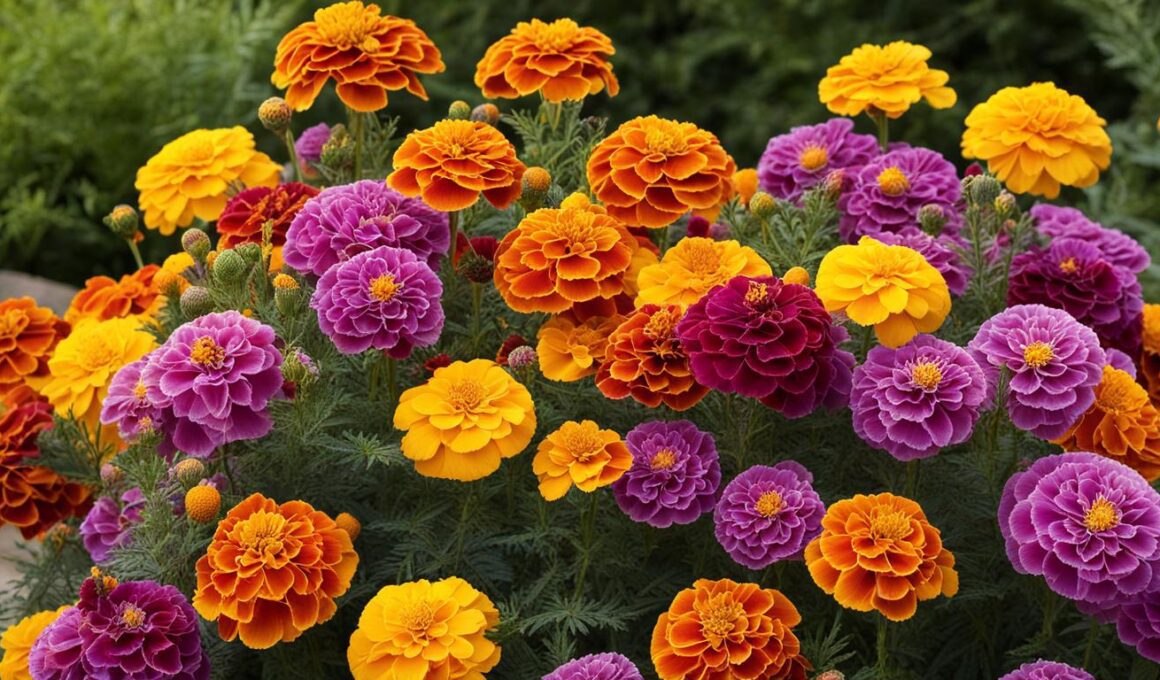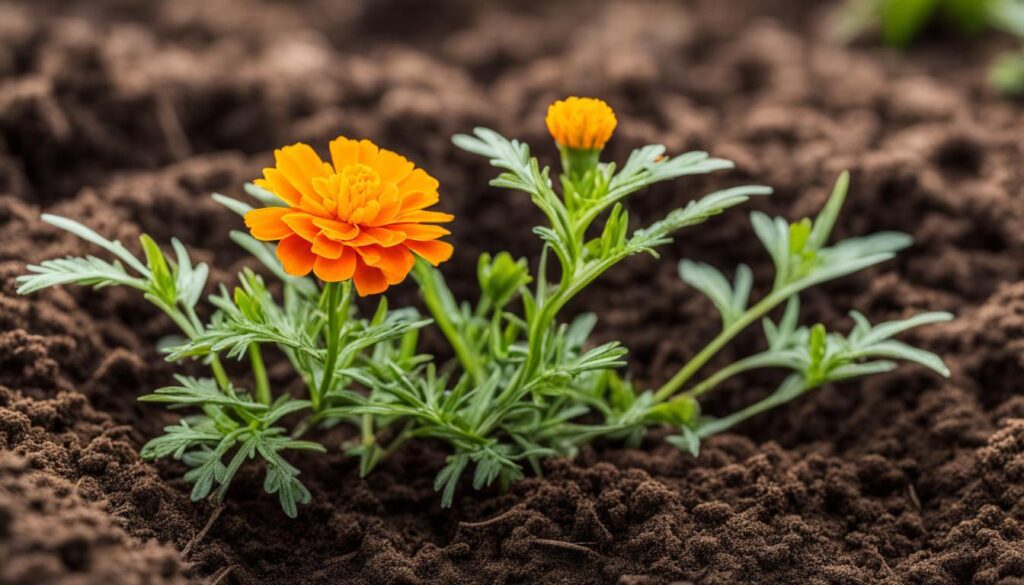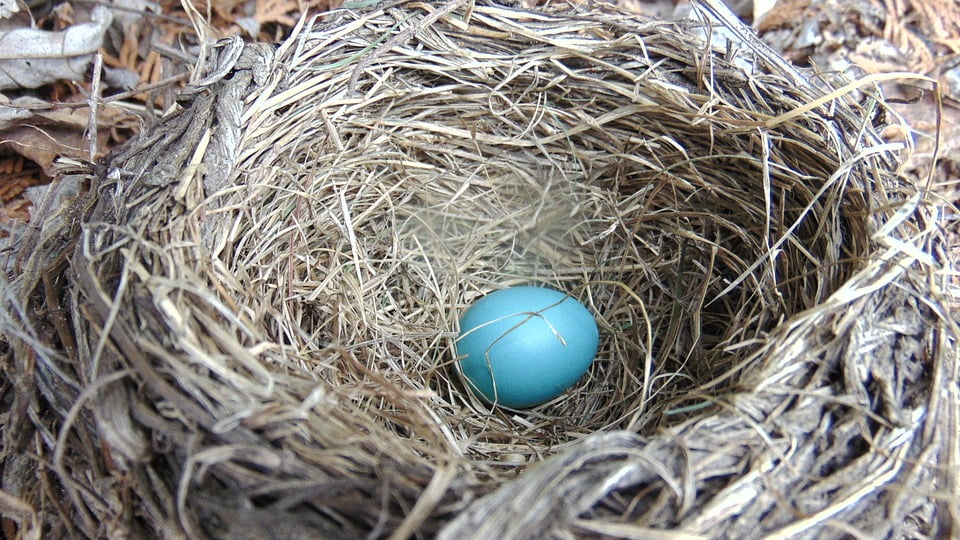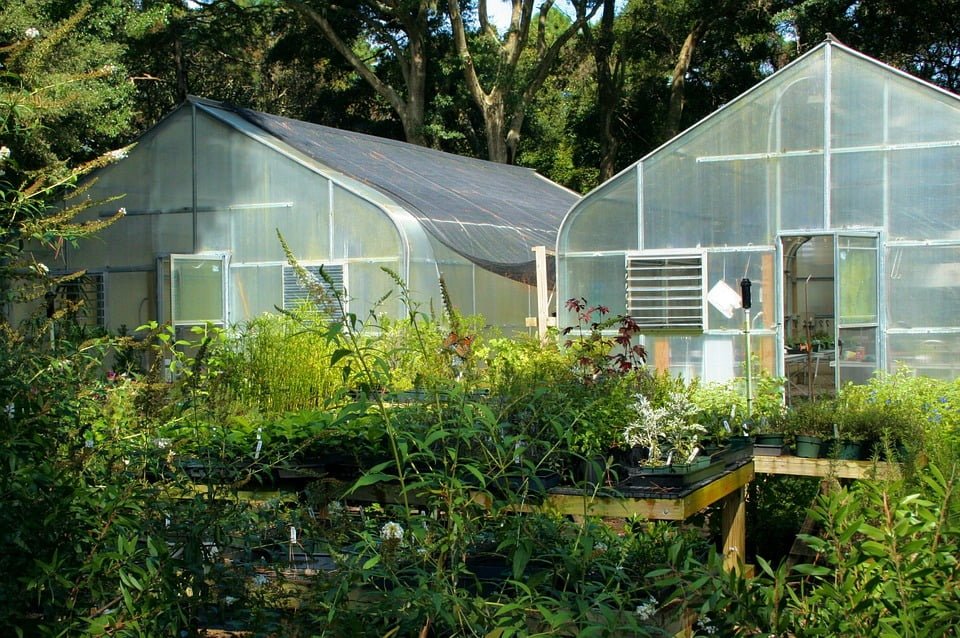Are you looking to enhance your green thumb with some vibrant blooms in your garden? Marigolds might just be the answer! But before you start planting, it’s important to understand whether marigolds are perennials or annuals. Let’s uncover the truth about these popular flowers and gain some valuable gardening insights.
Key Takeaways:
- Marigolds can be both perennial and annual plants, depending on the variety.
- Mexican marigolds and pot marigolds are examples of perennial marigolds.
- French and African marigolds are common annual varieties.
- Marigolds come in a variety of vibrant colors and can grow anywhere from 6 inches to 4 feet tall.
- Some marigolds have the ability to reseed themselves, giving the illusion of being perennial.
Understanding the Difference between Annuals and Perennials
When it comes to plants, understanding the difference between annuals and perennials is crucial for successful gardening. Annual plants, as the name suggests, complete their entire life cycle within a single season. They grow from seed, produce flowers, and go through the process of pollination and reproduction. Once this cycle is complete, annuals die, leaving behind their seeds to disperse and regrow the following season. This ability to self-seed often gives the impression that annuals are actually perennials. However, it’s important to note that annuals rely on energy production for a single year and do not have the ability to come back year after year.
On the other hand, perennial plants also complete their life cycle within a single season, but they possess the ability to come back year after year. Perennials go through a period of dormancy where they store energy in their roots, allowing them to survive the harsh conditions of winter. This energy stored during dormancy enables perennials to produce flowers and seeds for many years. Unlike annuals, perennials have a longer-lasting impact on a garden and provide a sense of permanence and stability.
While annuals provide immediate bursts of color and a continuous display of blooms throughout the season, perennials offer the advantage of coming back year after year, creating a well-established and consistent garden. By understanding the differences between these two types of plants, you can make informed decisions about which varieties to include in your garden, ensuring a beautiful and thriving landscape.
Planting Marigolds: Tips and Considerations
When it comes to planting marigolds, there are a few important tips and considerations to keep in mind. Marigolds thrive in full sunshine, so be sure to choose a location in your garden that receives at least 6 hours of direct sunlight each day. This will help ensure healthy growth and vibrant blooms.
Before planting, it’s important to prepare the soil properly. Marigolds can tolerate a variety of soil types but prefer moderately fertile, well-drained soil. You can improve the soil’s drainage by adding organic matter, such as compost or peat moss, before planting. This will help prevent waterlogged soil and promote healthy root development.
Timing is also crucial when planting marigolds. Wait until the soil has warmed up in spring before sowing marigold seeds directly in the garden. This is typically around the last frost date in your area. If you prefer to start seeds indoors, make sure to do so 4-6 weeks before the last expected frost. This will give the young plants enough time to grow and develop before being transplanted outdoors.
When it comes to seed germination, marigolds are relatively easy to grow. Simply sprinkle the seeds evenly over the soil surface and lightly press them down. Keep the soil consistently moist until the seeds germinate, which usually takes about 7-10 days. Once the seedlings have grown a few inches tall, thin them out or transplant them to their final spacing. For French and signet marigolds, plant them 8-10 inches apart, while African marigolds should be spaced 10-12 inches apart.
If you prefer container gardening, marigolds can be grown in pots as well. Choose a container with drainage holes and use a soil-based potting mix. Make sure to water the plants regularly, as container-grown plants tend to dry out more quickly than those planted in the ground.
Summary:
- Plant marigolds in an area that receives at least 6 hours of direct sunlight each day.
- Prepare the soil by adding organic matter for improved drainage.
- Wait until the soil has warmed up to plant marigold seeds directly in the garden.
- Start seeds indoors 4-6 weeks before the last expected frost if desired.
- Ensure soil moisture for successful seed germination.
- Thin out or transplant seedlings to their final spacing for optimal growth.
- For container gardening, choose a well-draining potting mix and water regularly.
Growing and Caring for Marigold Flowers
Once you have planted your marigold flowers, it’s essential to provide them with the proper care to ensure healthy growth and abundant blooms. Here are some important tips to help you with growing and caring for your marigold plants:
Deadheading for more blooms
While not necessary, deadheading, removing faded blooms, can encourage continuous blooming in your marigolds. By eliminating spent flowers, you redirect the plant’s energy from seed production to the development of new blooms, resulting in a longer flowering period.
Proper watering techniques
Marigolds prefer soil that is allowed to dry somewhat between waterings. Water your marigolds at the base to prevent powdery mildew and fungal diseases. Avoid overhead watering, as wet foliage can promote the growth of mildew. Keeping the soil evenly moist, but not waterlogged, will help your marigolds thrive.
Fertilization and mulching
It is best to avoid fertilizing marigolds during their active growth phase. Excessive nitrogen can lead to lush foliage at the expense of blooms. However, incorporating compost or well-rotted organic matter into the soil before planting will provide a nutrient-rich foundation for your marigolds. Additionally, applying a layer of organic mulch around the plants helps suppress weeds, retain moisture, and regulate soil temperature.
Companion planting benefits
Marigolds are known for their companion planting benefits, particularly their ability to repel harmful nematodes. These microscopic worms attack the roots of certain vegetables, leading to stunted growth and poor yields. Interplanting marigolds with vegetables like tomatoes, peppers, and eggplants can help protect them from nematode damage. The strong scent of marigolds acts as a natural deterrent, minimizing the risk of infestation.
By following these guidelines for growing and caring for marigold flowers, you can enjoy a vibrant and thriving garden filled with the bright colors and distinct fragrance of these beautiful blooms.
Recommended Marigold Varieties and Harvesting
When it comes to marigolds, there are plenty of varieties to choose from that can add a vibrant touch to your garden. Two popular options are French marigolds and African marigolds. French marigolds come in different series, each with its own unique height and color variations. They are known for their compact size and large range of vibrant colors, making them a perfect choice for borders, containers, or companion planting. On the other hand, African marigolds are taller and have larger flowerheads, creating a bold and stunning display in flower beds and cutting gardens.
“French marigolds bring a riot of color to any garden with their bright golds, oranges, and reds. African marigolds, on the other hand, make a statement with their impressive size and showy blooms,” says gardening expert, Laura Thompson. “Both varieties are excellent options for attracting bees and butterflies, adding life and movement to your outdoor space.”
Companion Plants and Edible Flowers
Marigolds are not only beautiful but also offer a range of benefits as companion plants. They can help repel harmful insects, such as nematodes, that can damage the roots of certain vegetables. Planting marigolds alongside tomatoes, peppers, and potatoes can help protect these vegetables from pests. Additionally, marigolds are known to attract beneficial insects like ladybugs and hoverflies, which helps control aphids and other garden pests naturally.
Did you know that marigold flowers are edible? Calendula, often referred to as pot marigold, is a close relative of marigolds and its flowers are commonly used in cooking, teas, and salads. “Calendula flowers have a slightly spicy and tangy flavor, perfect for adding a pop of color and taste to dishes,” explains culinary expert, Sarah Hernandez. “They can be used fresh or dried, and their bright orange and yellow hues make any dish visually appealing.”
Harvesting Marigolds
When it comes to harvesting marigolds, it’s best to pick the blooms at their peak. Look for flowers that are fully open and have vibrant colors. “To harvest marigolds, simply pinch or cut the flower stem at the base, just above a set of leaves,” advises Laura Thompson. “This will encourage the plant to produce more blooms throughout the season.”
If you wish to dry your marigold flowers for floral arrangements or crafts, strip the foliage from the stems and hang them upside down in a dark, well-ventilated area. Once completely dry, the flowers can be used in wreaths, potpourri, or other decorative projects.
Conclusion
Creating colorful flower beds is a delightful way to enhance your garden. By mixing annuals and perennials, you can achieve stunning and vibrant displays throughout the year. While perennials provide the backbone of your garden, annuals offer a wider range of colors and a longer blooming period.
When planning your flower beds, it’s important to be realistic about the lifespan of your plants. Annuals will need to be replanted once or twice a year, but the effort is well worth it for the burst of color they bring. Consider the timing of their blooming period and choose varieties that complement the perennials in your garden.
Remember to choose plants that are suitable for your region and growing conditions. Research the sunlight, soil, and watering requirements of each plant to ensure successful growth. By providing the right conditions, you’ll be rewarded with thriving and flourishing flower beds.
So go ahead and start planning your colorful flower beds, mixing the beauty of annuals and the resilience of perennials. With realistic planting, including the occasional replanting of annuals, you’ll have stunning displays that will bring joy and happiness to your garden all season long. Happy planting!
What is the Difference Between Annual and Perennial Marigolds?
When deciding between annual and perennial marigolds, it’s important to understand their differences. Annual marigolds complete their life cycle within one growing season, while perennial marigolds regrow each year. Check a marigold annual perennial guide to determine which variety best suits your garden needs.
FAQ
Are marigolds annual or perennial plants?
Marigolds can be both perennial and annual plants, depending on the variety. Mexican marigolds and pot marigolds (Calendula officinalis) are examples of perennial marigolds that come back year after year. French and African marigolds are common annual varieties.
How do annual plants and perennial plants differ in their life cycle?
Annual plants complete their life cycle within one season and die after producing flowers and seeds for reproduction. Perennial plants also complete their life cycle within a season but go through a period of dormancy where they store energy in their roots. They can still produce seeds, but their ability to come back each year makes them considered hardy.
What are the ideal conditions for planting marigolds?
Marigolds thrive in full sunshine and can tolerate hot summers. They can be planted in almost any type of soil but prefer moderately fertile, well-drained soil.
How should marigold seeds be sown?
Marigold seeds can be sown directly in the garden once the soil is warm or started indoors for slower-maturing varieties. French marigolds are often started from seed, while African marigolds are better purchased as young plants.
How should marigolds be cared for once they are established?
Once marigolds are established, pinching off the tops of the plants encourages bushier growth and more flowers. While deadheading is not necessary, removing faded blooms can promote continuous blooming. Marigolds prefer soil that is allowed to dry somewhat between waterings and should be watered at the base to prevent powdery mildew.
What pests or diseases can marigolds be susceptible to?
Marigolds have few pests or diseases but can be affected by spider mites, aphids, and powdery mildew. They are also known for their companion planting benefits, especially in repelling harmful nematodes that attack the roots of certain vegetables.
What are some recommended marigold varieties and their uses?
There are various marigold varieties to choose from, including French marigolds and African marigolds. French marigolds come in different series with different heights and colors, while African marigolds are taller and have larger flowerheads. Marigolds can also be dried for floral arrangements, and Calendula (pot marigold) is an attractive companion plant with edible flowers.












